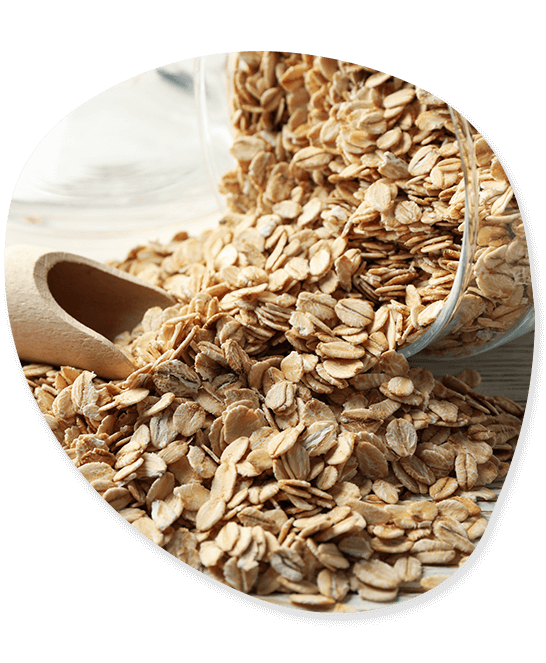Oats
A crop with Mediterranean roots is oats. Due to the numerous applications for this crop that exist now in various fields, its popularity has increased. Each year, oat exporters in India ship tonnes of oats to several nations. Oats are exported from India in a number of different kinds. The Indian oat exporter has a good commercial opportunity in exporting these very nutritious grains. Other benefits of oat export are numerous.

Nutrients:
- Calories – 389 calories
- Carbs – 66.3 g
- Fibre – 10.6 g
Vitamins:
- Vitamin B
Minerals:
- Manganese
- Phosphorous
- Copper
- Iron
- Selenium
- Magnesium
- Zinc
Pre-Shipment Inspection:
Standard Packing:
OATS VARIETIES WE EXPORT
Numerous oat types, such as HFO-114, Brunker-10, Weston-11, and others, are imported from India. Oats and other high-quality grains are exported from India to many different parts of the world. Thus, the export of oats is viewed as an excellent opportunity for local merchants to get into the global market.

HFO – 114 (HARYANA JAVI – 114)
The early-sown oat cultivar HFO-114, which was introduced in 1974, offers two cuts, has good tillering and synchronous flowering. This species of plants is tall and disease- and lodging-resistant. Their seeds are brash. According to reports, it yields 20 q/ha of seed, 13 t/ha of dry matter, and 50–55 t/ha of green fodder in two cuts.

BRUNKER-10
Oats of the Brunker- 10 kind grow quickly and have delicate, silky leaves. This kind of oats grows slowly in the beginning and has prostrate plants with abundant tillering. The Brunker-10 plant has delicate, slender leaves. In roughly 140 days, the green fodder output is 40–45 t/ha. The main growing regions for Brunker-10 are Punjab, Haryana, Delhi, and Uttar Pradesh.

WESTON 11
A rare type of oats called Weston 11 was introduced in 1978. This oat type grows to a height of around 155 cm and is semi-erect. Weston 11 has broad, panicles with smooth leaves. This type needs 110 days to reach flowering and 160 days to reach maturity.

PALAMPUR-1
This 1980-introduced oat variety has a medium maturity, abundant tillering, and a reputation for being lodging-resistant. The cultivation of the Palanpur-1 cultivar of oats has been authorised in Himachal Pradesh. About 50 t/ha of green fodder is produced by this type of exporting oats.

BUNDEL JAI-822
Following intervarietal hybridization and the pedigree technique of selection, a cross between IGO-4268 and Indio-6-5-1 resulted in the development of this variety of oats. The cultivar, which was introduced in 1989, has glabrous nodes and an erect growth habit. Bundel Jai-822 blooms at 95 to 100 days and reaches maturity after 125 to 130 days.

SABZAAR (SKO-7)
Sabzaar was created by SKUA&T in Srinagar and launched in 1997. In Jammu and Kashmir’s high-altitude regions as well as in Kashmir’s temperate zones, this cultivar has been approved for growing. SKO-7 is a leafy, prolific tillering variety that works well for multiple purposes. About 35 to 40 t/ha of green fodder are produced.

HARITA (RO -19)
The Harita variety was announced for Maharashtra in 2007 after its debut. This multicut type of oats was created by MPKV, Rahuri, by selection from a base population in Kent, and it is appropriate for wintertime irrigation. Harita typically yields around 9.5 t/ha of dry matter and roughly 50 t/ha of green fodder.

UPO–212
In 1990, this cultivar of oats was approved for multi-cut agriculture in northern and central India. The UPO-212 cultivar features thin, varied awns and a light green stem with 8–10 tillers. This variety typically yields 60 t/ha of green fodder.

OL-125
This oat cultivar was authorised for multi-cut farming in northern and central India in 1990. The UPO-212 cultivar has light green stems with 8–10 tillers and thin, variable awns. Usually, this cultivar produces 60 t/ha of green fodder.
